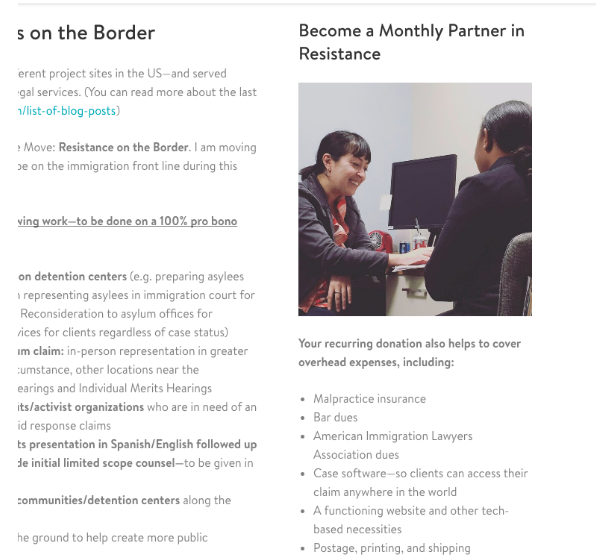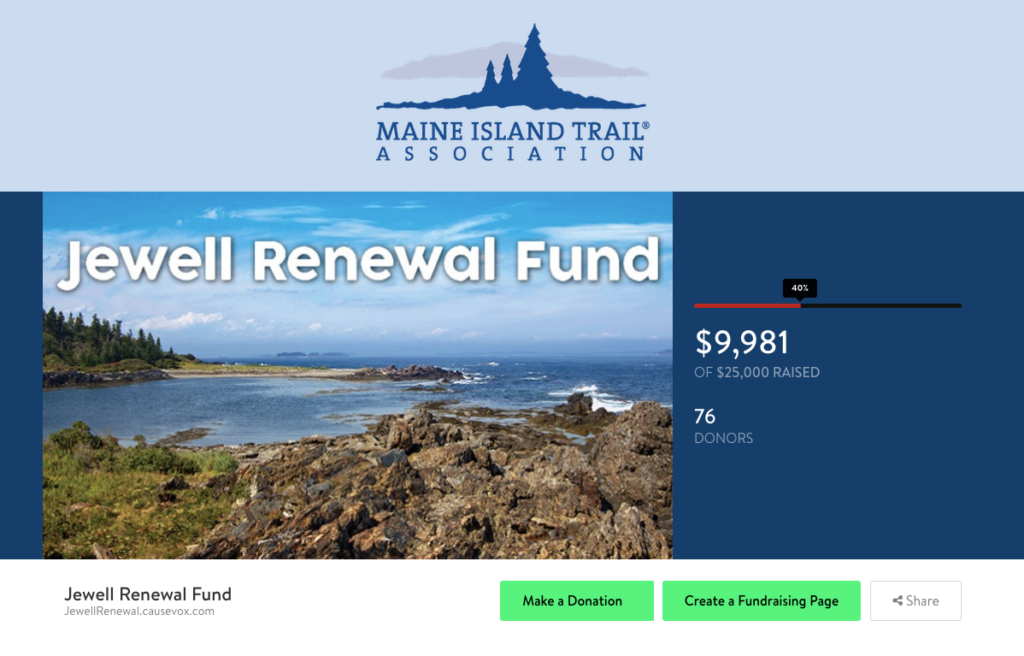It happens without much thought—change. One day, you’re calling your donors on the phone to ask their support for an upcoming fundraising campaign and it works like clockwork for months and possibly even years. Then, the next thing you know, the reception isn’t quite as positive as you’d like.
What happened? Don’t worry, the problem wasn’t the message, it was the approach.
Just like there are trends in fashion, home decor, and beauty, there are definitive shifts in fundraising. Yesterday, donors responded to email marketing, phone calls, and fundraising events, but do those methods fly today?
That’s the question the 2017 Global Trends in Giving report sought to understand.
Sponsored by NP Tech for Good, Global Trends in Giving surveyed a significant number of people across the world to better grasp the causes they support, how they like to give, and what they look for when choosing a charity.
And the results are definitely worth a look. There are so many significant takeaways from this report that can help you shape your fundraising plan as the focus shifts to year-end fundraising.
The best part? This report has reinforced CauseVox’s finding that People Fundraising is more important now than ever before. In a time of constant noise via emails, phone calls, and social media blasts, it’s important to have a personalized donor experience including relationship-based fundraising methods.
Take a moment to read through these 5 takeaways and then formulate a plan to implement some action items in the near future.
“Yesterday, donors responded to email marketing, phone calls, and fundraising events, but do those methods fly today?” tweet this
1. Create A Monthly Giving Program
The Finding: 54% of donors give through a sustainer program, with 82% giving monthly
We love the news that a whopping 54% of donors give via a recurring (“sustainer”) program! Why is this so significant? Because monthly/recurring giving all but guarantees a steady stream of income for your nonprofit.
Whether you choose to collect monthly (the frequency of 82% of sustainers), bi-weekly, or quarterly, you can rest assured that donors will reliably give time after time, and possibly year after year, if you make the process easy on them.
Plus, recurring giving keeps your donors connected with you on a regular basis. Many nonprofits who use this fundraising technique choose to send donation receipts along with an update on the organization and the impact of their ongoing gift.
There’s no time like the present to create a recurring giving program. For detailed information on getting started, check out our blog post on the topic and read up on Watsi’s stellar monthly giving program.

Action Items
- Create a plan to incorporate a recurring giving program
- Promote recurring giving on all fundraisers, including on your online crowdfunding and peer-to-peer fundraising websites
- Make recurring giving the first option your donors can choose when donating
2. Offer Many Ways To Give
The Finding: 61% of donors prefer to give online, but direct mail and event fundraising are also popular options
Long gone are the days when a simple direct mail flyer would bring in the funds you need to keep your nonprofit up and running. Today, there are a number of options out there—you just need to determine what works for your specific audience.
From the Global Trends in Giving report, we know that the vast majority of donors prefer giving online (61%) compared to any other medium, including mail, phone, and text.
But if you went ahead and shifted your entire focus on online fundraising, you run the risk of alienating close to around 40% of your donor base. Your best bet is to learn about your audience and cater your approach based on your findings.
Action Items:
- Send out a donor survey to determine how your audience prefers to give
- Ramp up efforts based on these results, all the while focusing on providing a personal donor experience.
3. Use Social Media To Inspire & Educate Donors
The Finding: 25% of donors are inspired to give via social media
Today, more than ever before, your donors are using social media to connect with the people, products, and even nonprofits that they know and support. Luckily, for your organization, your donors are linking to your Facebook, Instagram, and Twitter accounts to see the impact of their donations in real-time.
Since you already have their attention, continue using social media as a tool to inspire and educate your online audience. The first step is to find out where your donors are, so go ahead and reference this report.
As you can see, the vast majority of people are on Facebook, but depending on the age and gender of your donor base, you may benefit from using more than one social media platform. If you don’t know where to start, try surveying your donors.
Once you know where your donors are online, you can cater the messaging to them. Try one or more of these techniques:
- Use videos: Video is the fastest-growing segment of social media, which is one of the reasons video is prioritized on a Facebook news feed.
- Post impact-related stories, including client stories and moving images of your organization in action.
- Ask your most loyal supporters to share your posts with their friends online
The last point, social sharing, is something worth noting. There’s so much noise out there online between emails, websites, and social media ads.
What makes you stand out from the crowd isn’t necessarily your strong advertising campaign (although it doesn’t hurt). No, it’s the organic, recommendation-based promotions that make the most difference.
This is one of the reasons CauseVox promotes People Fundraising—because when you use the power of your supporters to encourage action, it packs a bigger punch!
Word of mouth matters, which is why social media is so important in the nonprofit world right now.
“Word of mouth matters, which is why social media is so important in the nonprofit world right now.” tweet this
Action Item:
- Ramp up your social media presence by using your current online audience to spread the word about your mission, impact, and fundraising campaigns.
4. Ramp Up Year-End Giving
The Finding: 61% of donors giving during the holidays, with 77% of all holiday giving occurs around Christmas
Donors give more during the holidays than any other time of the year, which is why, as a fundraising professional, you work yourself to the bone the last 3 months of the year.
So, it’s not surprising the Global Trends in Giving report noted the same results we all know and follow. 61% of all donors give during the holidays, particularly in and around Christmas. Therefore, if you’re not using the period between Thanksgiving and the New Year to raise money, you’re missing out.
The key is to continue fine-tuning your year-end fundraising, possibly by incorporating some of the other trends we see from this report (peer-to-peer fundraising, using social media, establishing a recurring giving program).
Action Items:
- Create a year-end fundraising plan
- Set a year-end fundraising goal
- Incorporate 1 or more new fundraisers/techniques to reach a broader audience, such as a peer-to-peer fundraiser or a crowdfunding campaign.
5. Try Crowdfunding and P2P Fundraising
The Finding: 44% have donated to a crowdfunding campaign within the last 12 months
Nonprofits have always crowdfunded, it just looks a bit different now. Today, it’s in the form of online campaigns, team-based fundraising initiatives like Dragon Boat races and walk-a-thons, peer-to-peer campaigns, and more.
Since we started CauseVox over 6 years ago, we’ve seen a steady increase in online crowdfunding and peer-to-peer fundraising campaigns year over year. There are many reasons for this trend:
- More donors are online
- Giving online is easier than mailing a check or attending an in-person event
- People want to take a more active role in the donor experience by getting involved as a personal fundraiser or sharing the campaign with their friends and family online
44% of all respondents to the Global Trends in Giving survey said they donated to a crowdfunding campaign in the past year, and that’s a number that’s expected to continue rising.
“44% of respondents said they donated to a crowdfunding campaign in the past year.” tweet this
Again, these forms of fundraising give your supporters a more active role in the process (thus, expanding on their relationship with your org), introduce you to a broader audience, and ultimately boost your bottom line.
Here’s a great example of a crowdfunding campaign on CauseVox’s platform.

Action Item:
- Incorporate one or more crowdfunding or peer-to-peer fundraising campaigns into your annual fundraising plan.
- Continue asking your supporters to get involved in the process as personal fundraisers or social sharers.
The world of fundraising is constantly evolving. It’s up to us as nonprofit professionals to analyze these studies and then put the results into action. To read the full 2017 Global Trends in Giving report, follow this link.
For more information on using CauseVox to power your crowdfunding or peer-to-peer campaign, start by scheduling a 1-on-1 demo.




